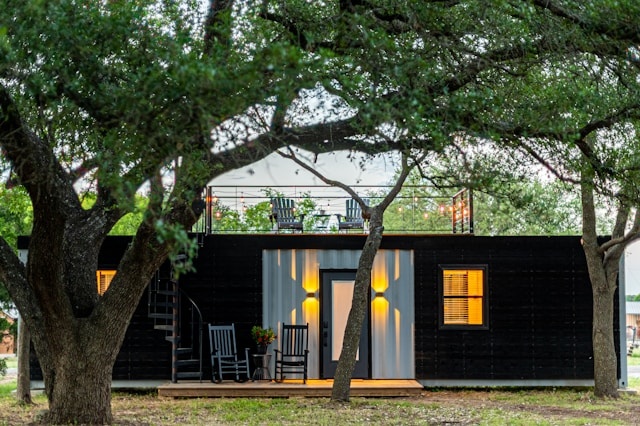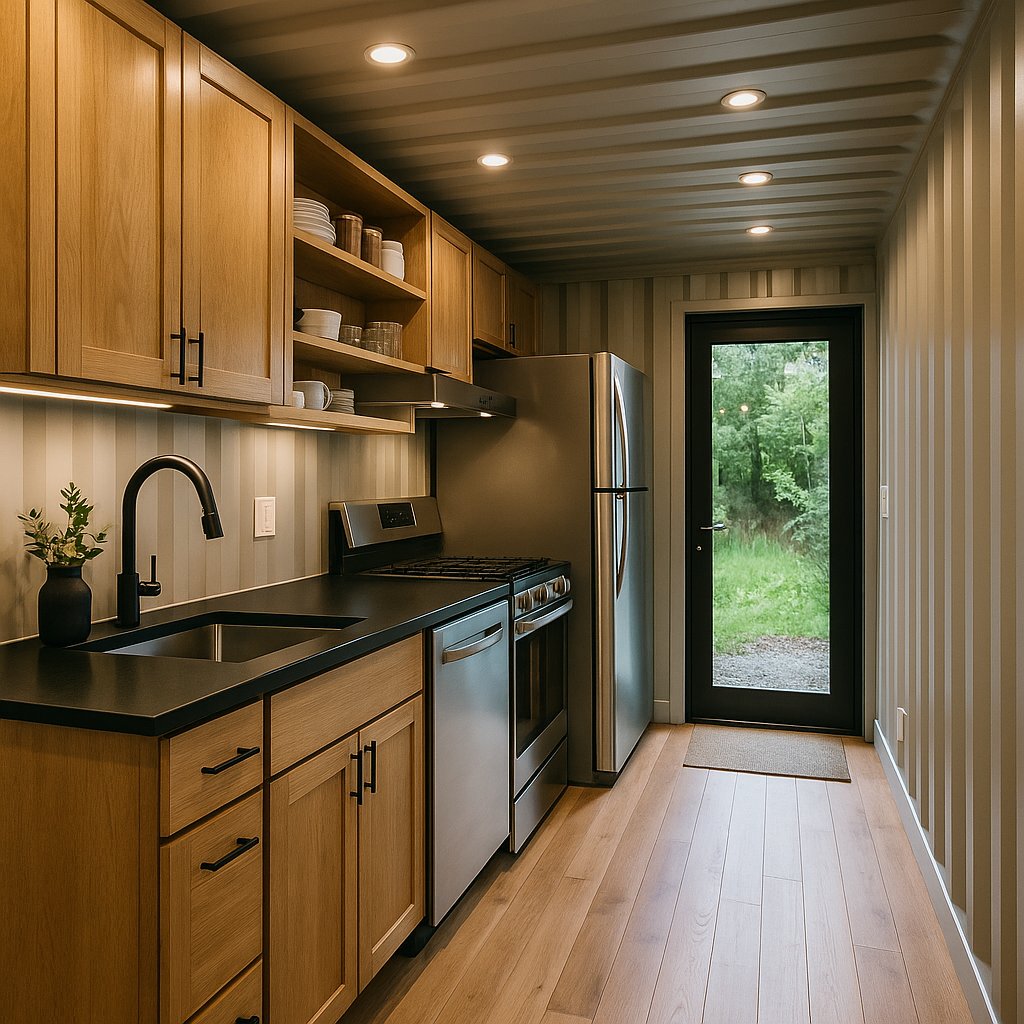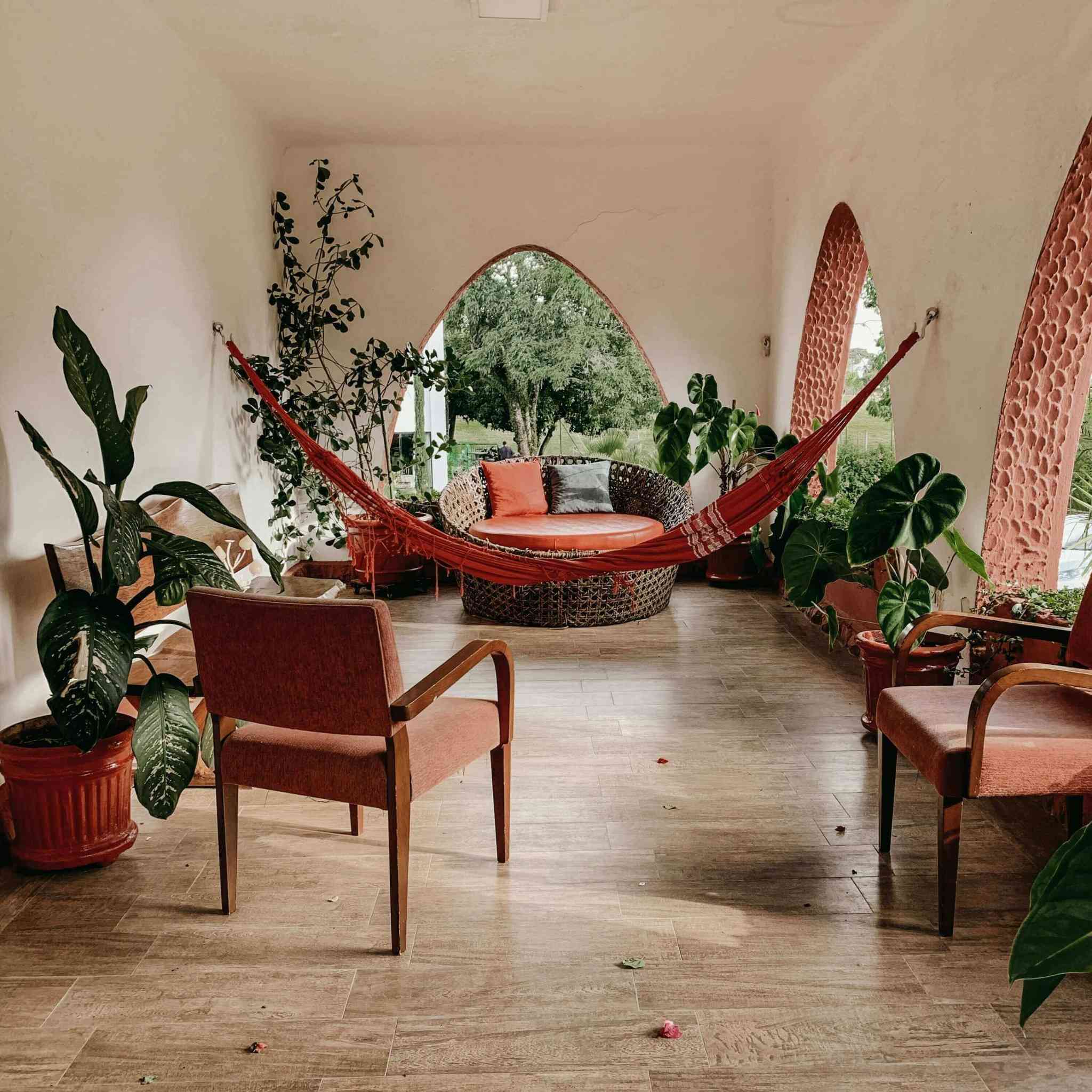Introduction: When the Unexpected Becomes Home
Have you ever stopped to think that rusty shipping container at the port could transform into your dream home? What was once just a steel box for transporting goods has become the new darling of modern architecture. And we’re not talking about mediocre projects here. We’re talking about pure luxury homes with bold designs, cutting-edge technology, and industrial charm that will make anyone swoon.

If you’re tired of traditional construction or just want a unique space to call your own, come with me as I show you how to turn a simple shipping container into an incredible home. Spoiler: you’ll be amazed at what’s possible!
1. Why Choose a Shipping Container?
1.1. Affordable Costs and Time Savings
When it comes to building or renovating, two factors weigh heavily: time and money. This is where shipping containers shine! While traditional construction can take over a year to complete (and still leave you in the red), a container project can be finished in just 3 to 6 months, with costs up to 40% lower.
But how is this possible? The answer lies in the modular nature of shipping containers. They arrive ready-made, with a sturdy structure that eliminates many conventional construction steps. Plus, since they’re easy to transport and install, you save not only time but also labor costs.
And that’s not all! Maintenance is also cheaper. Corten steel, commonly used in these projects, is corrosion-resistant and lasts for decades with minimal care. Compared to plaster that needs repainting every year or wood that requires constant treatment, containers come out ahead.
Table: Container vs. Traditional Construction – Which Is Worth It?
| Criterion | Container | Traditional |
|---|---|---|
| Construction Time | 3-6 months | 12-24 months |
| Cost per m² | $240 – $500 | $700+ |
| Durability | 50+ years | 60+ years |
| Customization | Extremely High | Limited |
1.2. Creative Freedom: Your Home, Your Rules
If you’re the type who loves to personalize every corner of your home, shipping containers are the perfect canvas. Unlike traditional constructions, which often have structural limitations, containers can be cut, stacked, and combined in endless ways.
Want a home with high ceilings? Just use a High Cube container. Dream of a mezzanine or rooftop terrace? Simply stack the modules strategically. The best part? Everything can be designed to adapt to your land, even if it’s uneven.
Inspiring Example: The “Cube House” project in São Paulo used 4 containers to create a 120m² home complete with a rooftop pool. The secret? The containers were arranged in an “L” shape, freeing up space for an indoor garden and floor-to-ceiling windows.
And don’t think this is just for small homes. There are already mansions made with dozens of containers, proving that the only limit is your imagination.
1.3. Sustainability That Makes a Difference
In a world where environmental consciousness is increasingly important, shipping containers stand out as a sustainable option. After all, you’re repurposing an existing structure, avoiding material waste and reducing the carbon footprint of construction.
But sustainability goes beyond the structure itself. Many projects incorporate:
- Green roofs, which not only look stunning but also improve thermal insulation and help absorb CO₂.
- Solar panels, which reduce (or even eliminate) dependence on the electrical grid.
- Rainwater harvesting systems, perfect for irrigating gardens or even for non-potable use inside the home.
In other words, you can have a luxurious home without weighing on your conscience. Plus, you’ll save on bills at the end of the month!
2. Design & Engineering: Transforming a Steel Box into a Home
2.1. The Challenges (and How to Solve Them)
Of course, it’s not just about putting a bed inside a container. There are some challenges, but all have solutions:
🔹 Thermal and Acoustic Insulation
Containers are made of steel, a material that gets very hot in summer and cold in winter. But this isn’t a problem! With modern techniques, you can ensure excellent thermal comfort.
The most common solution is using EPS panels (an efficient and affordable thermal insulator) on interior walls. For something more premium, there are special coatings like rock wool or even solid wood, which insulate while making the space cozy.
Noise? Steel can be a great conductor of sound, but with proper acoustic planning (like rubber mats or double drywall), you won’t even remember you’re inside a container.
🔹 Ventilation
Another crucial point is air circulation. Since containers are enclosed structures, it’s essential to strategically plan windows and openings to create a “chimney effect” – where hot air rises and escapes through upper openings while fresh air enters from below.
In more sophisticated projects, you can even integrate smart climate control systems that automatically regulate temperature.
🔹 Interior Space
This is where creativity comes in! With just 2.40m in width (for a standard container), every centimeter counts. Some genius solutions include:
- Sliding walls that transform a bedroom into a living room in seconds.
- Lowered floors to gain precious extra height.
- Built-in, multifunctional furniture, like beds that convert into desks or sofas with hidden storage.
2.2. Success Story: The Container Home That Made Headlines
The “Casa Maré” project in Rio de Janeiro became a reference and even appeared in architecture magazines. Two 40-foot containers (about 12m each) were transformed into a 120m² home, featuring:
✔ Rooftop infinity pool – yes, on the top floor!
✔ Gourmet kitchen with a central island and slim appliances.
✔ Home office with ocean views and panoramic windows.
The best part? It cost 30% less than traditional construction and took just 5 months from start to finish.

3. How to Plan Your Container Home (Step by Step)
3.1. Checklist: What to Decide Before Starting
Before buying a container, it’s essential to plan every detail. Here’s a checklist to help:
✅ Container Type:
- High Cube – 30cm extra height (2.70m internal), ideal for high ceilings.
- Reefer – Comes pre-insulated, perfect for extreme climates.
- Open Top – No fixed roof, great for skylights or open areas.
✅ Finishes:
- Exterior: Corten steel (that modern rusted look), cumaru wood, or even ceramic cladding.
- Interior: Radiant flooring (pure luxury!), liquid porcelain, or reclaimed wood for a rustic vibe.
✅ Technologies:
- Home automation – Lights, curtains, and even windows controlled via smartphone.
- Off-grid system – Solar panels + batteries for energy independence.
3.2. Global Inspirations (To Fall in Love With)
Want to see how far creativity can go? Check out these incredible projects:
🌎 “The Wave House” (California) – Containers were curved to form waves, creating a fluid, unique structure. The highlight? A rooftop spa with ocean views.
🌍 “Cultural Container House” (São Paulo) – Besides the façade with a vertical garden, this home has a library with rotating shelves, allowing you to rearrange the space as you please.
🌏 “Nomad 9” (Portugal) – A mobile unit that expands automatically at the push of a button. Perfect for those who love to travel without sacrificing comfort.
4. The Step-by-Step Process: From Buying a Container to a Finished Home
4.1. Where and How to Buy Your Container
There are three main options for acquiring your container:
- New containers – Most expensive but come in perfect condition, with no rust or structural damage.
- One-trip used containers – Used only once for maritime transport and in excellent condition, costing 20-30% less than new ones.
- Cargo-worthy used containers – Cheapest but require more renovations. May have scratches, minor dents, or surface rust.
Pro tip: Always inspect the container in person before buying. Check:
- Floor condition (especially in corners)
- Door seals
- Possible leaks or rust spots
4.2. Preparing the Land and Foundation
Contrary to popular belief, containers need a proper foundation. The most common options are:
Concrete slab
- Ideal for stable land
- Average cost: $30-60/m²
- Advantage: Evenly distributes weight
Metal piles
- Perfect for uneven or sloped terrain
- Allows for level adjustments
- Average cost: $40-80 per pile
Concrete blocks
- Most economical solution
- Recommended only for small, temporary projects
4.3. The Renovation Process: From Basic to Luxury
Transforming a container into a home happens in stages:
- Cleaning and prep
- Remove original floors (usually made of chemically treated wood)
- Sandblasting to remove old paint and rust
- Apply anti-corrosion primer
- Cutting and openings
- Plan windows, doors, and passages between containers
- IMPORTANT: Never cut more than 40% of a wall without structural reinforcement
- Insulation and finishes
- Thermal insulation layer (EPS, rock wool, or fiberglass)
- Install drywall or wood for interior walls
- Exterior cladding (Corten steel, wood, or even ceramic)
- Electrical and plumbing
- Embedded electrical channels in walls
- Water and sewage pipes under raised floors
- Planning for smart systems
5. Special Care and Maintenance
5.1. How to Protect Your Container Long-Term
While extremely durable, containers require some specific care:
Against rust:
- Apply protective varnish every 3-5 years
- Regularly inspect welds and corners
- Keep paint in good condition
Against excessive heat:
- Green roofs or vertical gardens help with insulation
- UV film for windows in very hot regions
- Cross-ventilation is essential
Extra tip: If your home is painted black (a current trend), opt for special thermal paints that reflect some heat.
5.2. Insurance and Documentation
Many people wonder: “Can I finance or insure a container home?” The answer is yes!
Required documentation:
- Approved city permit
- Engineer’s Technical Responsibility Note (ART)
- Habitability certificate
Home insurance:
- Standard coverage + clause for metal structures
- Cost 10-15% higher than traditional homes due to materials
6. Frequently Asked Questions (And Answers You Need to Know)
“Is it possible to build multi-story buildings with containers?”
Yes! The current record is an 8-story building in the Netherlands. In Brazil, legislation generally allows up to 3-4 stories, depending on the city.
“Are containers safe against fires?”
Steel itself doesn’t burn, but the interior needs protection:
- Fire-rated wall coatings
- Fireproof doors between modules
- Mandatory smoke detectors
“How long does a container home last?”
With proper maintenance:
- Main structure: 50+ years
- Interior finishes: 15-20 years (same as traditional homes)
Conclusion: Why This Trend Is Here to Stay
The container home movement isn’t just a passing fad—it represents a profound shift in how we view housing. Combining sustainability, affordability, and innovative design, these structures prove you can have comfort and style without following conventional standards.
For those considering this path, here’s a tip: start small. How about building a home office or studio in your backyard first? This way, you can test what it’s like to live in such a space before making a permanent move.
And remember: what matters most isn’t the walls around you, but how you turn this space into your true home.
“In container architecture, every weld tells a story, every cut reveals a possibility.”
Next steps:
- Visit a container home to experience the space
- Consult with a specialized architect
- Download free floor plans for inspiration (link in bio)
Now it’s your turn: what will be your first step toward making your steel home a reality?




